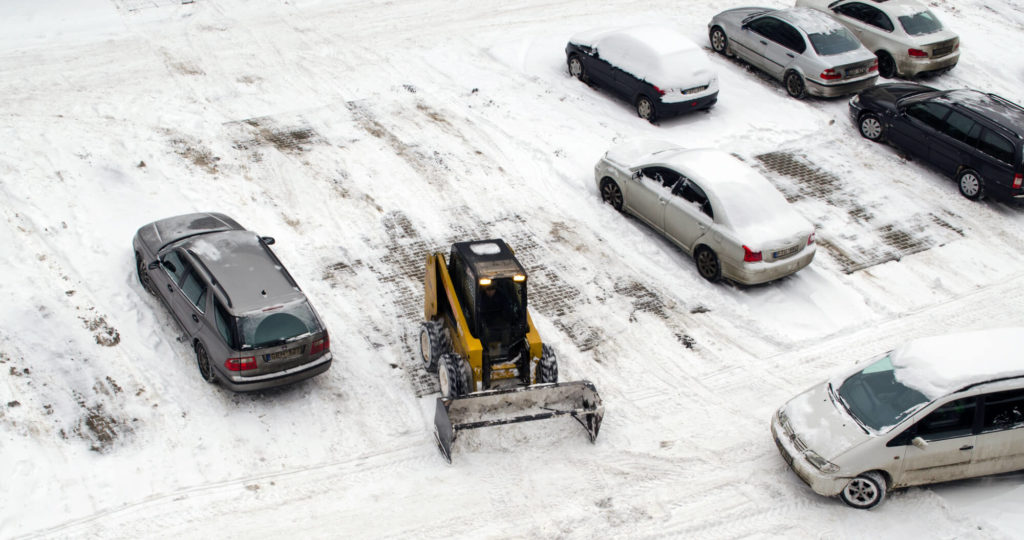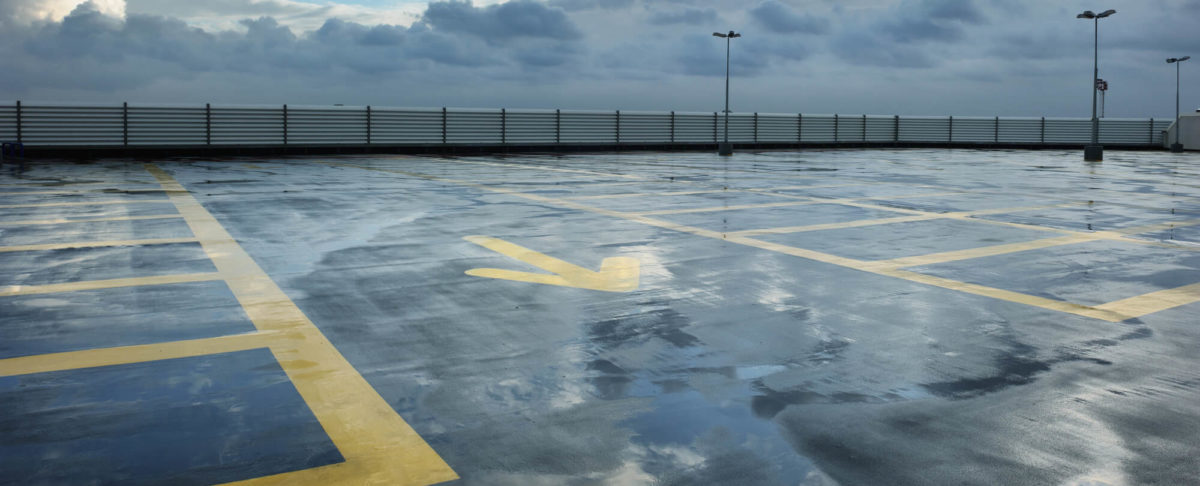Just from looking at it, you might suspect that your asphalt parking lot is incredibly durable and resistant to the impacts of weathering and heavy use. Although asphalt is a relatively reliable material, with changing seasons comes extreme weather that can cause severe parking lot breakdown without proper maintenance and repairs. Varying weather conditions paired with continuous vehicular use put your commercial parking lot pavement at risk for cracking, potholes, and pooling water.
Heavy rainfall, dramatic temperature fluctuations, ice, and snow all contribute to the breakdown of asphalt parking lots. As the seasons change throughout the year, keep a note of your commercial lot’s current state. At even the slightest sign of a crack, pothole, or divot, contact an asphalt paving professional to assess the damage’s extent before it gets out of control.
How the Changing Seasons Affect Your Asphalt Parking Lot
Property owners who don’t provide proper maintenance to their asphalt parking lot are often met with unpleasant results as the seasons change. Commercial parking lots with heavy foot and vehicular traffic are especially prone to damage combined with various weather conditions.
Adequately maintained asphalt can have an impressive lifespan requiring minimal repairs. However, commercial parking lot owners should be aware of weather conditions throughout the seasons that can damage any asphalt area.

Winter
The winter months, especially in midwestern states like Minnesota, can be incredibly unpredictable. Heavy snowfalls, ice, sleet, cold rain, hail, and freezing temperatures all contribute to commercial pavement damage.
Extreme Cold Temperatures
- Dramatic temperature fluctuations or prolonged periods of extreme cold can cause the asphalt to expand and contract, causing cracks or potholes.
- Depending on your location, it’s essential to install an asphalt that can withstand extreme freeze-thaw cycles.
Ice
- When ice is present in a parking lot, property owners use de-icing agents to avoid liability for slip-and-fall injuries. Like coarse salts, these substances wear down the asphalt aggregate over time, weakening it, causing low pavement spots where water can pool.
Snow
- Heavy snowfall calls for swift action from local plow companies. However, the large plow vehicles can easily rip up asphalt and require repair.
- Heavily compacted snow formed into piles by plows also contributes to the wear of asphalt parking lots. The weight can create an unlevel surface across the pavement.
It’s crucial to rigorously inspect pavement before, during, and after wintertime since this is when an asphalt parking lot is most easily damaged.
Spring
As the weather becomes warmer during spring, property owners are often tempted to allow maintenance to fall by the wayside, even with the threat of heavy rainfalls and melting snow. Most asphalt surfaces allow water to move away from high-traffic areas. However, there are still some potential seasonal threats to asphalt pavement in parking lots during the spring:
Heavy Rainfall
- If your asphalt is already experiencing cracks, rain is only going to further the issue. The water penetrates the asphalt and expands systems of cracks, referred to as alligator or block cracks.
- When water seeps through the asphalt surface, moisture is left behind between the subsurface and the bottom of the paved structure. This causes sunken areas in the asphalt to appear, which leads to pooling water.
Melting Snow
- Once the weather begins to warm, melting snow from the previous season melts. If your parking lot was full of piles of plowed snow, the sudden surge of precipitation causes cracks or sunken, uneven surfaces in your paved parking lot.
- Already existing alligator and block crack systems allow melting snow to seep beneath the asphalt surface, further expanding the crack system and causing potholes on the surface.
Summer
The summer months are another season where property owners put off the responsibility of maintaining their paved parking structure. Your parking lot probably receives the highest levels of traffic during the summer, so it’s essential to keep up with regular maintenance and repairs even when the weather might seem mild and warm.
Extreme Heat
- One of the biggest culprits of asphalt parking lot damage during the summer is high temperatures. On scorching days, intense UV rays have the potential to penetrate the pavement, causing fading and deterioration of the surface.
- Hot temperatures also cause the asphalt to pull away from the subsurface, weakening it and making it susceptible to potholes.
- Extremely high temperatures soften the asphalt material, making it susceptible to damage from vehicular traffic. Heavy vehicles can create divots in the pavement on a hot summer day.
Maintenance of your asphalt pavement is essential even in the warm summer months. Catch cracks and pooling water early using a summer maintenance checklist to avoid further damage to occurring the paved structure.
Fall
Each season indeed comes with its own set of severe weather conditions that can affect a commercial paved parking lot. Although fall is no different, typically, it is the mildest of all seasons. While there are usually some scattered showers and brisk days, fall is actually the best time to repair or re-pave your parking lot.
Take time in the cool autumn season to assess any damage to the surface of your parking lot. Then, utilize a professional commercial paving partner to help repair any potholes, cracks, or other damage using industry-leading equipment and techniques like infrared asphalt repair.
Repairing Your Commercial Parking Lot Pavement
Suppose you’ve begun to notice cracks and potholes forming in your commercial parking lot or frequently experience pooling water along its surface. In that case, it is time to repair or replace your asphalt.
When damaged asphalt isn’t repaired swiftly, seriously detrimental results occur. Networks of extensive alligator and block cracks are unsightly and ultimately allow water to damage the structure’s subsurface. Heavy traffic and high heat mix to make uneven surfaces across your asphalt parking lot.
When these damages arise as seasons change, property owners are tempted to ignore them or move them to the bottom of the to-do list. Putting off essential pavement repairs prolongs issues and potentially creates even further damage. Contact a commercial pavement professional for repairs so that your parking lot remains usable all year long.




